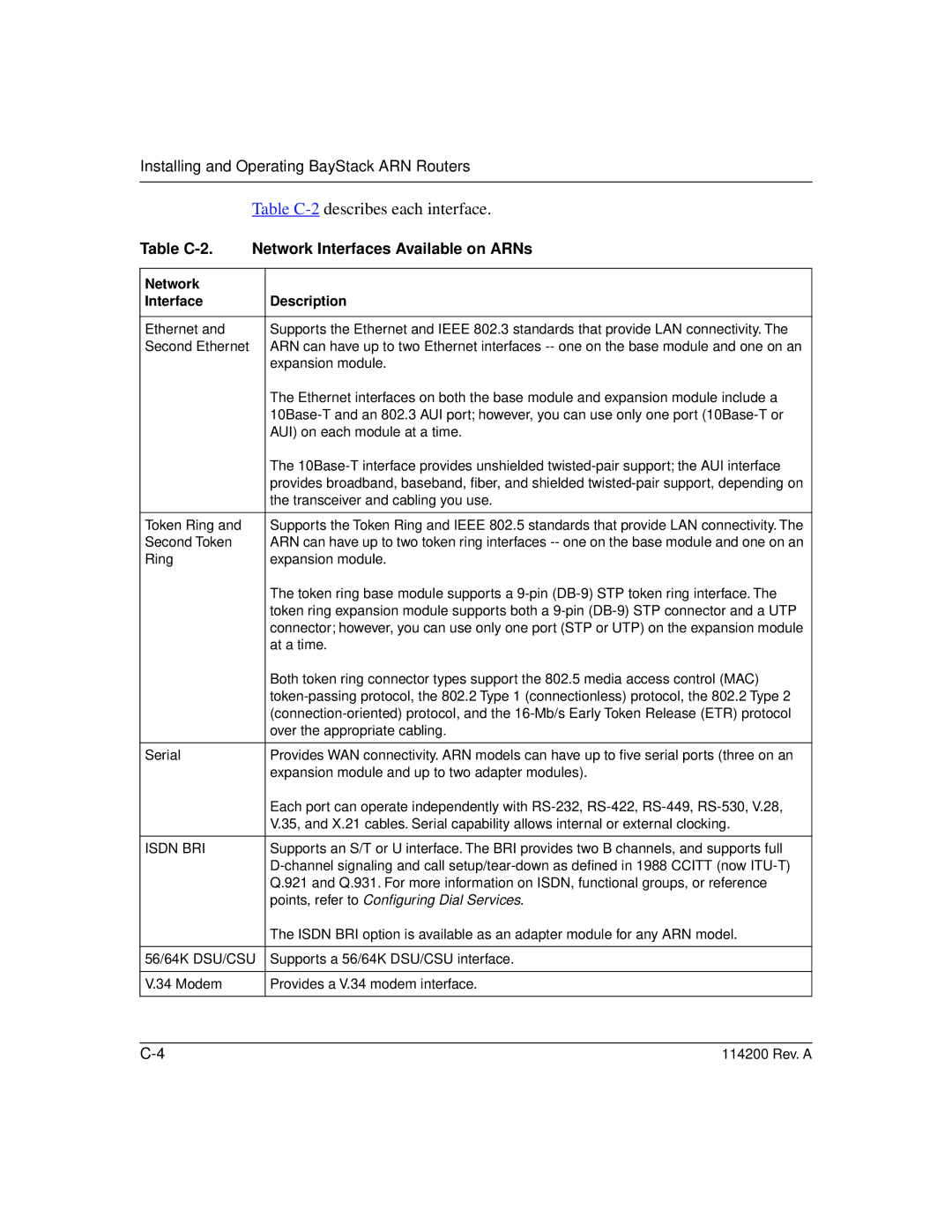
Installing and Operating BayStack ARN Routers
| Table | |
Table | Network Interfaces Available on ARNs | |
|
|
|
Network |
|
|
Interface |
| Description |
|
|
|
Ethernet and |
| Supports the Ethernet and IEEE 802.3 standards that provide LAN connectivity. The |
Second Ethernet |
| ARN can have up to two Ethernet interfaces |
|
| expansion module. |
|
| The Ethernet interfaces on both the base module and expansion module include a |
|
| |
|
| AUI) on each module at a time. |
|
| The |
|
| provides broadband, baseband, fiber, and shielded |
|
| the transceiver and cabling you use. |
|
|
|
Token Ring and |
| Supports the Token Ring and IEEE 802.5 standards that provide LAN connectivity. The |
Second Token |
| ARN can have up to two token ring interfaces |
Ring |
| expansion module. |
|
| The token ring base module supports a |
|
| token ring expansion module supports both a |
|
| connector; however, you can use only one port (STP or UTP) on the expansion module |
|
| at a time. |
|
| Both token ring connector types support the 802.5 media access control (MAC) |
|
| |
|
| |
|
| over the appropriate cabling. |
|
|
|
Serial |
| Provides WAN connectivity. ARN models can have up to five serial ports (three on an |
|
| expansion module and up to two adapter modules). |
|
| Each port can operate independently with |
|
| V.35, and X.21 cables. Serial capability allows internal or external clocking. |
|
|
|
ISDN BRI |
| Supports an S/T or U interface. The BRI provides two B channels, and supports full |
|
| |
|
| Q.921 and Q.931. For more information on ISDN, functional groups, or reference |
|
| points, refer to Configuring Dial Services. |
|
| The ISDN BRI option is available as an adapter module for any ARN model. |
|
| |
56/64K DSU/CSU | Supports a 56/64K DSU/CSU interface. | |
|
|
|
V.34 Modem |
| Provides a V.34 modem interface. |
|
|
|
114200 Rev. A |
